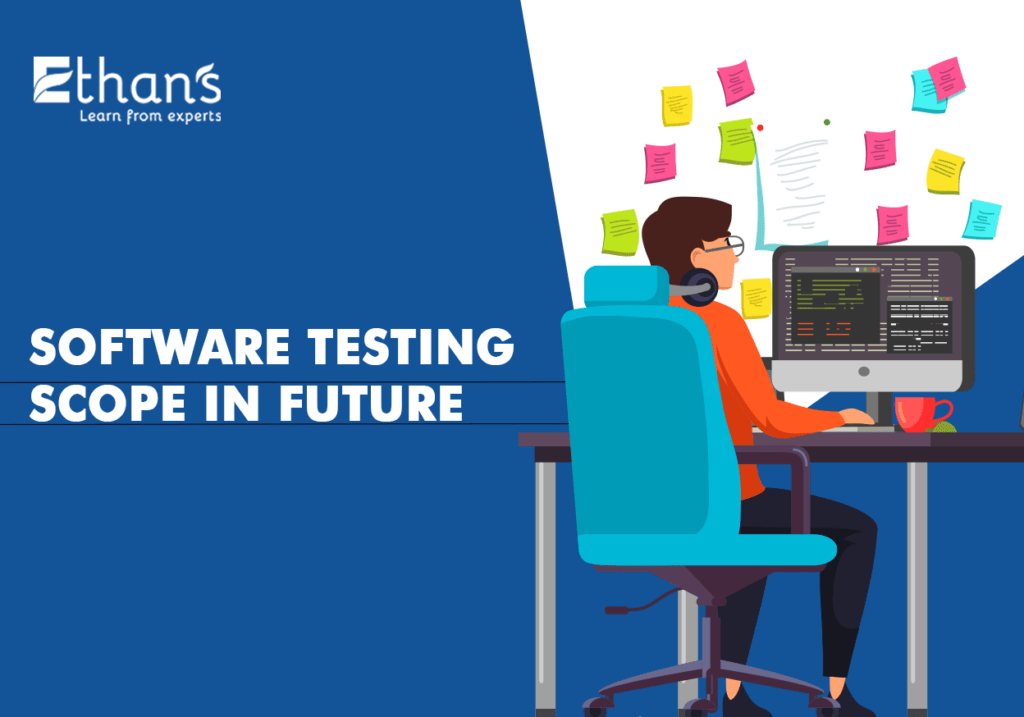Software testing, once perceived as a mere quality assurance phase in the software development lifecycle, has evolved into a strategic imperative for organizations seeking to deliver reliable, high-quality software products in an increasingly competitive and complex digital landscape. As we look to the future, the scope of software testing is poised to undergo profound transformations, driven by emerging technologies, evolving methodologies, and shifting market dynamics. Here, we delve into the expanding scope of software testing and explore the opportunities and challenges that lie ahead.
Shift-Left and Shift-Right Testing
In response to the growing demand for faster time-to-market and continuous delivery, software testing is shifting left, with testing activities initiated earlier in the development process. Shift-left testing emphasizes collaboration, automation, and continuous feedback, enabling teams to detect and address defects earlier, reduce rework, and accelerate release cycles. Conversely, shift-right testing focuses on monitoring and testing in production environments, leveraging real-world data and user feedback to improve software quality and performance continuously.
Test Automation and Artificial Intelligence
The advent of artificial intelligence (AI) and machine learning (ML) is revolutionizing test automation, enabling intelligent test case generation, autonomous test execution, and predictive analytics. AI-driven testing tools can analyze vast amounts of data, identify patterns, and predict potential issues, enhancing test coverage, efficiency, and accuracy. As organizations embrace AI-driven testing solutions, testers will need to acquire new skills in data analysis, algorithm design, and model training to harness the full potential of these technologies.
Shift to DevOps and Continuous Testing
The widespread adoption of DevOps practices and continuous integration/continuous delivery (CI/CD) pipelines is driving a paradigm shift in software testing. Continuous testing, an integral part of the CI/CD process, involves automated testing at every stage of the software delivery pipeline, from code commit to production deployment. Testers are required to collaborate closely with developers, operations teams, and other stakeholders to ensure seamless integration, rapid feedback, and continuous improvement throughout the software development lifecycle.
Performance Engineering and Scalability Testing
With the proliferation of cloud computing, microservices architecture, and distributed systems, ensuring the performance, scalability, and reliability of software applications has become paramount. Performance engineering encompasses proactive performance testing, tuning, and optimization activities aimed at delivering superior user experiences under various load conditions. Testers must possess expertise in performance testing tools, monitoring solutions, and cloud platforms to address the unique challenges posed by modern, distributed architectures.
Security Testing and Ethical Hacking
In an era of escalating cyber threats and data breaches, security testing has emerged as a critical component of software testing. Security testing involves identifying vulnerabilities, assessing risks, and implementing countermeasures to protect software applications from potential exploits and attacks. Testers with expertise in ethical hacking, penetration testing, and security assessment methodologies play a vital role in safeguarding digital assets, ensuring compliance with regulatory requirements, and maintaining customer trust.
Mobile and IoT Testing
The proliferation of mobile devices and Internet of Things (IoT) devices has expanded the scope of software testing to include mobile app testing and IoT device testing. Mobile testing involves validating the functionality, usability, and performance of mobile applications across multiple devices, platforms, and network conditions. IoT testing focuses on verifying the interoperability, security, and reliability of IoT devices and ecosystems, spanning smart home devices, wearables, industrial sensors, and connected vehicles.
Test Data Management and Privacy Compliance
As data privacy regulations become increasingly stringent, test data management and privacy compliance have become key considerations in software testing. Testers must ensure that sensitive data, such as personally identifiable information (PII) and protected health information (PHI), is handled securely and in compliance with regulatory requirements, such as GDPR, CCPA, and HIPAA. Test data masking, anonymization, and synthetic data generation techniques are employed to mitigate privacy risks and protect sensitive information during testing.
Agile and Context-Driven Testing
Agile methodologies, with their emphasis on flexibility, collaboration, and customer feedback, have transformed the way software is developed and tested. Agile testing practices prioritize iterative development, adaptive planning, and continuous improvement, enabling teams to respond quickly to changing requirements and deliver value to customers incrementally. Context-driven testing emphasizes tailoring testing approaches and techniques to the specific context of each project, taking into account factors such as domain complexity, team dynamics, and stakeholder expectations.
Test Environment Management and Containerization
Effective test environment management is essential for ensuring reproducibility, consistency, and reliability in software testing. Containerization technologies, such as Docker and Kubernetes, offer lightweight, portable, and scalable solutions for provisioning and managing test environments across development, testing, and production stages. Testers must familiarize themselves with containerization tools and techniques to orchestrate complex test environments efficiently and facilitate seamless collaboration between development and testing teams.
Exploratory and Usability Testing
Exploratory testing, characterized by simultaneous learning, test design, and test execution, complements scripted testing approaches by encouraging testers to explore software applications freely and creatively. Usability testing focuses on evaluating the user interface, user experience, and accessibility of software products, ensuring that they meet the needs and expectations of end-users. Testers with strong analytical skills, domain knowledge, and empathy for end-users are well-positioned to conduct effective exploratory and usability testing, uncovering hidden defects and usability issues that traditional testing methods may overlook.
Conclusion
In conclusion, the scope of software testing is expanding rapidly, driven by technological advancements, evolving methodologies, and changing business requirements. Testers must adapt to this dynamic landscape by acquiring new skills, embracing emerging technologies, and adopting innovative testing approaches. By staying abreast of industry trends, collaborating closely with development and operations teams, and prioritizing continuous learning and improvement, testers can thrive in the future of software testing, delivering value and driving quality in an increasingly digital world.

